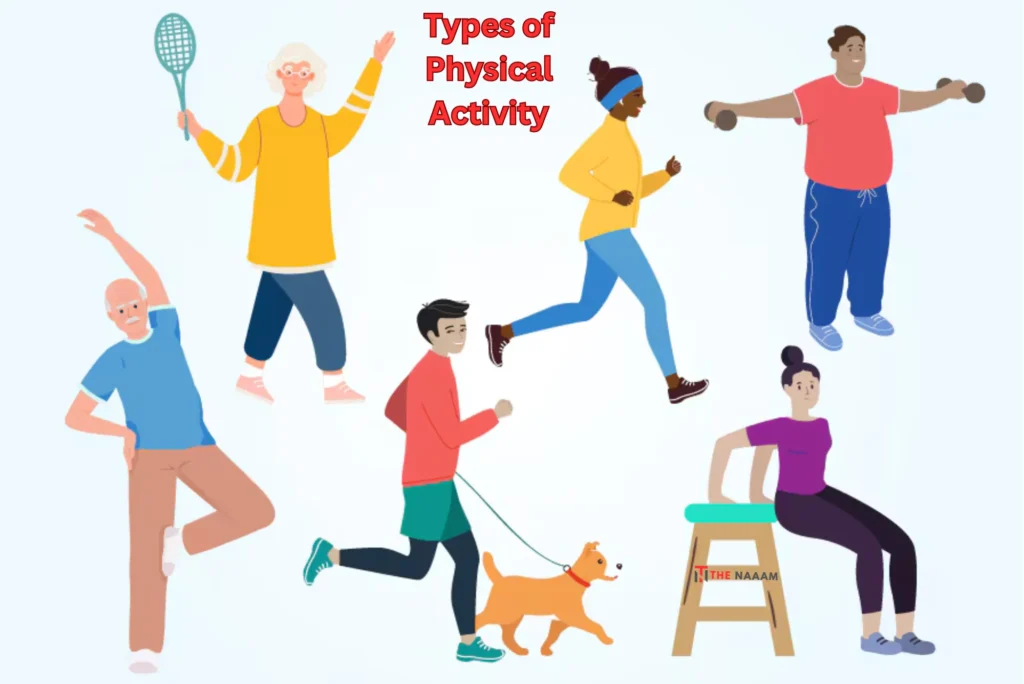Table of Contents
ToggleExploring the Benefits How Does Physical Activity Help Diabetes?
Discover the profound effects of physical activity on diabetes management. Learn how exercise aids in controlling blood sugar levels and improving overall health. Diabetes, a chronic condition affecting millions worldwide, presents a myriad of challenges. Yet, amidst these challenges lies a potent tool for management: physical activity. Let’s delve into the intricate relationship between exercise and diabetes management.
Understanding Diabetes
Before delving into the role of physical activity, it’s crucial to comprehend the nature of diabetes itself. This condition, characterized by elevated blood sugar levels, stems from either insufficient insulin production or the body’s ineffective use of insulin. With Type 1 diabetes, the body doesn’t produce insulin, while Type 2 diabetes involves insulin resistance.
The Importance of Physical Activity
Blood Sugar Regulation
One of the most significant benefits of physical activity for individuals with diabetes is its ability to regulate blood sugar levels. Exercise enhances insulin sensitivity, allowing cells to better utilize glucose for energy. This effect persists even after the activity has ended, leading to improved long-term glucose control.
Weight Management
Obesity is a significant risk factor for Type 2 diabetes, making weight management crucial for prevention and management. Regular physical activity aids in weight loss or maintenance, reducing insulin resistance and lowering the risk of diabetes-related complications.
Cardiovascular Health
Diabetes increases the risk of cardiovascular diseases such as heart attacks and strokes. Engaging in regular physical activity strengthens the heart and improves circulation, mitigating these risks and promoting overall cardiovascular health.
Types of Physical Activity

Aerobic Exercise
Aerobic activities such as walking, jogging, swimming, and cycling are particularly beneficial for individuals with diabetes. These activities increase heart rate and breathing, improving cardiovascular fitness and aiding in blood sugar control.
Strength Training
Incorporating strength training exercises, such as lifting weights or using resistance bands, helps build muscle mass and improve insulin sensitivity. Stronger muscles can better utilize glucose, contributing to better blood sugar management.
Flexibility and Balance Exercises
While often overlooked, flexibility and balance exercises are essential, especially for older adults with diabetes. These activities, including yoga and tai chi, improve joint mobility, reduce the risk of falls, and enhance overall well-being.
Safety Considerations
While physical activity offers numerous benefits, it’s essential to approach exercise safely, especially for individuals with diabetes. Here are some key considerations:
Consult with a Healthcare Professional
Before starting any exercise regimen, individuals with diabetes should consult with their healthcare provider. They can provide personalized recommendations based on the individual’s health status and medical history.
Monitor Blood Sugar Levels
Regular monitoring of blood sugar levels before, during, and after exercise is crucial. This helps individuals understand how different activities affect their glucose levels and allows for adjustments to medication or food intake as needed.
Stay Hydrated and Fuel Properly
Proper hydration and nutrition are vital for maintaining energy levels during exercise and preventing complications such as hypoglycemia. Individuals should drink plenty of water and consume a balanced meal or snack containing carbohydrates and protein before and after physical activity.
Best Exercise for Diabetes at Home Aerobic and Strength Training Combo
One of the best exercises for managing diabetes at home is incorporating a combination of aerobic and strength training activities into your routine. Aerobic exercises like walking, cycling, or even dancing help improve cardiovascular health and regulate blood sugar levels by increasing insulin sensitivity.
Additionally, strength training exercises such as bodyweight squats, lunges, or resistance band exercises help build muscle mass, which can further enhance insulin sensitivity and glucose uptake by cells.
By engaging in regular physical activity that includes both aerobic and strength training components, individuals with diabetes can effectively manage their condition and improve overall health from the comfort of their own home. So, if you’re looking for the best exercise for diabetes at home, focus on a well-rounded routine that incorporates both aerobic and strength training exercises to reap maximum benefits.
Finding the Best Time to Exercise for Type 2 Diabetes

Determining the best time to exercise for individuals with Type 2 diabetes requires consideration of various factors, including personal preferences, daily schedules, and individual responses to physical activity. However, research suggests that exercising in the morning may offer several benefits for managing blood sugar levels.
Morning exercise can help jumpstart your metabolism and improve insulin sensitivity, which is particularly beneficial for individuals with Type 2 diabetes. Best Exercise For Diabetes Type 2 morning workouts may help regulate appetite and energy levels throughout the day. However, the “best” time to exercise ultimately depends on your unique circumstances and lifestyle.
Some people may find that exercising later in the day fits better with their schedule or provides a necessary energy boost. The key is consistency and finding a time that you can commit to regularly. Experiment with different times of the day and observe how your body responds.
Regardless of the timing, the most important thing is to engage in regular physical activity to reap the numerous benefits it offers for managing Type 2 diabetes. Therefore, finding the Best Time To Exercise For Type 2 Diabetes that fits your schedule and preferences is essential for long-term success in diabetes management.
The Benefits of Lifelong Physical Activity
One benefit of lifelong physical activity is its ability to promote healthy aging and maintain mobility and independence as we grow older. What Is One Benefit Of Lifelong Physical Activity Regular exercise helps to build and maintain muscle strength, flexibility, and balance, which are essential for carrying out daily activities and reducing the risk of falls and injuries.
Additionally, lifelong physical activity supports bone health, reducing the risk of osteoporosis and fractures later in life. By staying active throughout the lifespan, individuals can enjoy a higher quality of life, increased longevity, and independence well into their later years.
How Does Exercise Help Type 2 Diabetes?
Exercise plays a pivotal role in the management of Type 2 diabetes by offering multifaceted benefits that contribute to improved health outcomes. When individuals engage in regular physical activity, such as aerobic exercises, strength training, or flexibility exercises, their bodies undergo positive physiological changes that directly impact their diabetes management.
Firstly, exercise enhances insulin sensitivity, allowing cells to more efficiently utilize glucose for energy, thus helping to lower blood sugar levels. Moreover, physical activity promotes weight loss or maintenance, which is crucial for individuals with Type 2 diabetes, as excess weight can exacerbate insulin resistance.
Additionally, exercise strengthens the cardiovascular system, reducing the risk of heart disease, a common complication of diabetes. Furthermore, regular exercise can improve mood, reduce stress levels, and increase overall well-being, all of which are important for managing diabetes effectively. In essence, exercise acts as a powerful tool in the arsenal against Type 2 diabetes, offering a holistic approach to health management.
The benefits of physical activity for individuals with diabetes cannot be overstated. From blood sugar regulation to weight management and cardiovascular health, exercise plays a crucial role in diabetes management and overall well-being. By incorporating regular physical activity into their routine and following safety guidelines, individuals with diabetes can improve their quality of life and reduce the risk of complications associated with the condition.












